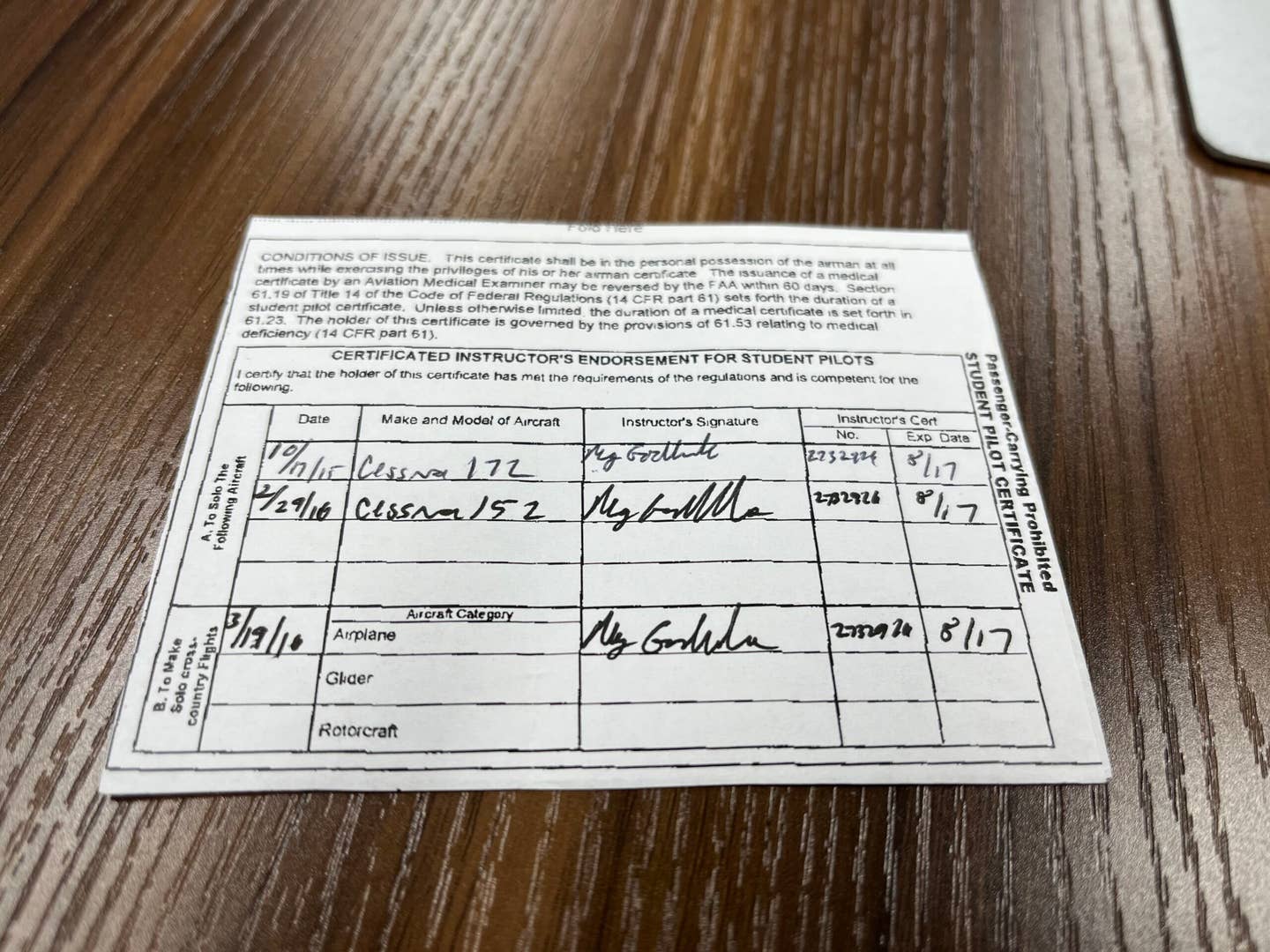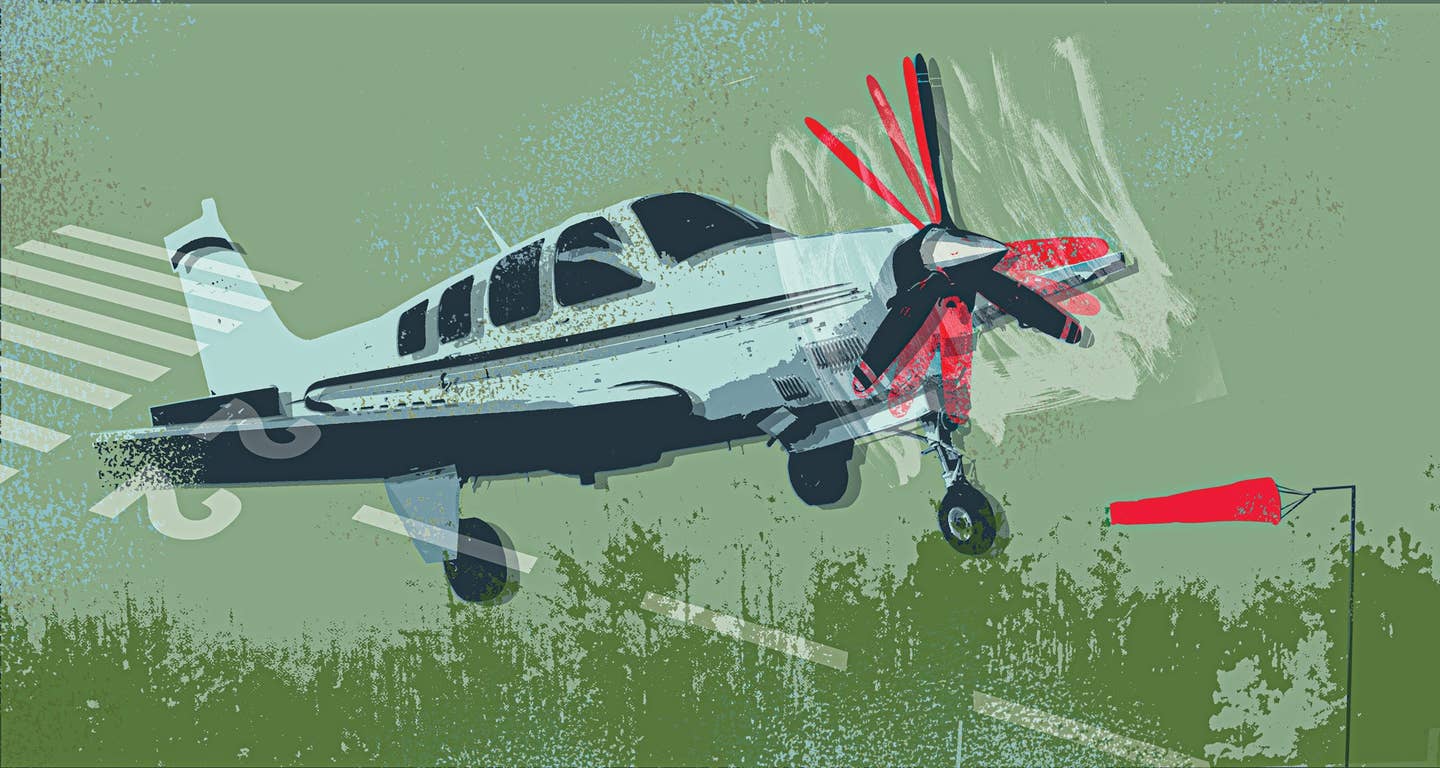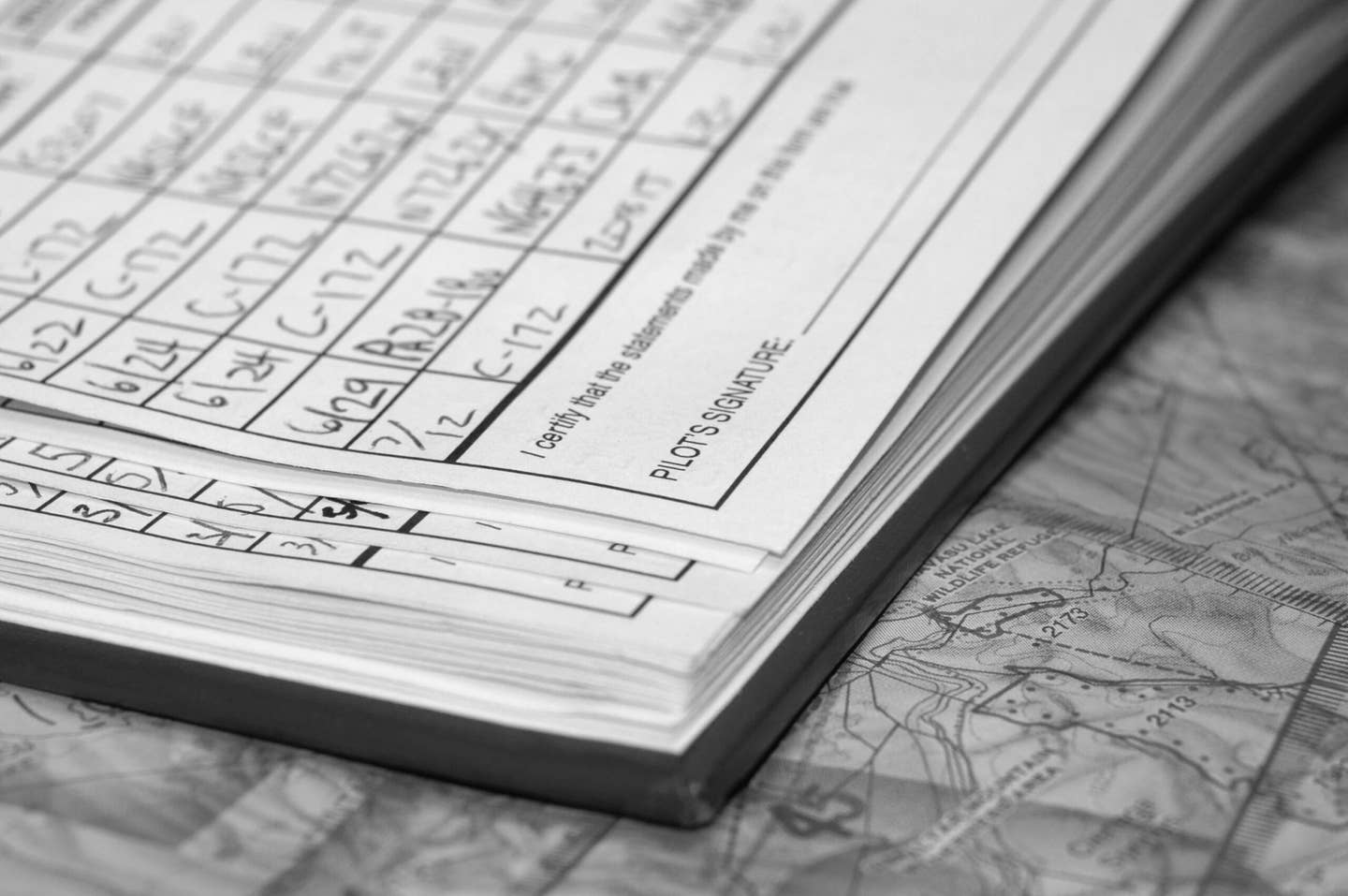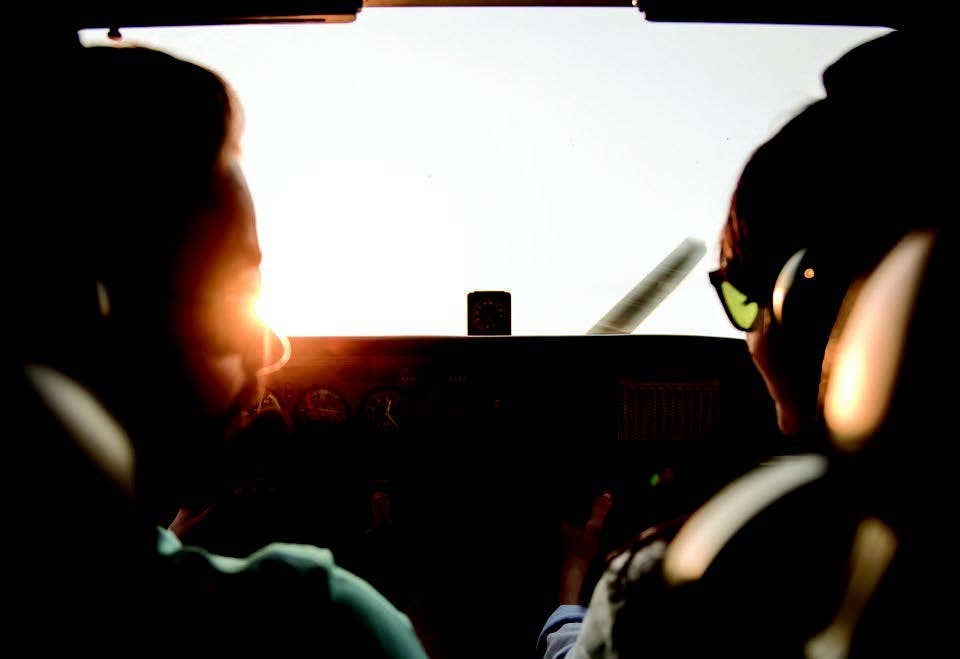Something Happened: Wind Shear Takes Down a Grumman Trainer
Remember that an airplane does not instantly recover airspeed that’s lost in a wind shear.

Always favor airspeed over climb rate and, if the nose and airspeed drop at once, push, don’t pull. [Adobe Stock]
On a cloudless April afternoon a Grumman AA-1B Trainer lined up on Runway 16 at Dodge Center, Minnesota (KTOB), for takeoff. The wind, 27 knots gusting to 34, was coming from the right, 50 degrees off the little airplane’s nose. Three people had seen the pilot board the airplane and taxi out. One of them watched as it took off.
When the airplane was, he thought, 500 feet above the ground and three-quarters of the way down the 4,500-foot runway, he returned to his work. A few minutes later, one of the others, who had not watched the takeoff but perhaps heard an impact, alerted him to what turned out to be the wreckage of the Trainer in a farm field not far from the end of the runway.
If you're not already a subscriber, what are you waiting for? Subscribe today to get the issue as soon as it is released in either Print or Digital formats.
Subscribe NowThe instrument-rated commercial pilot, 61, was killed. The National Transportation Safety Board’s report on the accident does not mention whether he had obtained a weather briefing for the flight, which was bound for an airport only 40 nm away. An AIRMET was in effect for occasional moderate turbulence below 12,000 feet, with a potential for low-level wind shear below 2,000 feet over an area that included both the departure and destination airports. But the pilot could have guessed as much while walking out to the airplane.
More cautionary, perhaps, would have been two pilot reports that unfortunately came too late. A pilot who landed at an airport 22 miles south of the accident site reported an indicated airspeed drop of 20 knots, caused by wind shear, 150 feet above the ground. The runway orientation at that airport was almost the same as at the accident site. A little later, a Northwest Airlines DC-9, scheduled to land at an airport 16 miles to the east, turned back because the steady crosswind component of 31 knots exceeded company landing parameters. As if a 31-knot crosswind component were not enough, the tower reported a 42-knot gust while the DC-9 was on approach.
The two-seat Grumman was a bit of a hot rod. Originally equipped with a Lycoming O-235 of 108 hp, it had been re-engined with a 160 hp O-320. The engine power is significant because, although its gross weight was less than 1,600 pounds, the stock Trainer, with a 24-foot wingspan, was never a strong climber, as it could do no better than 600 to 700 fpm at sea level. The more powerful engine adds credibility to the witness report of the airplane being at 500 feet well before the end of the runway.
The airplane, manufactured in 1973, was not equipped with the electronic recording equipment that now allows us to anatomize some accidents with second-by-second precision. We do know, however, the pilot had logged 2,400 hours, but fewer than 22 of them had been in the Grumman, which he had acquired less than a year earlier.
The takeoff roll would have been short—probably under 400 feet—but tricky, with a 20-knot crosswind component pushing the airplane to the left. The pilot would probably have wanted to get the wheels off the ground as early as possible. He was light, so, say he rotated at 60 knots, then turned 15 degrees into the wind to maintain runway heading and accelerated to 75 knots. The airplane could certainly climb at better than 1,000 fpm, which is 17 feet per second, and its ground speed along the runway was about 55 knots, or 92 feet per second. In the 30 seconds needed to gain 500 feet, it would have progressed about 2,800 feet along the runway. Add 400 feet for the takeoff roll and you get 3,200 feet. The witnesses’ report was only a guess, and the small size of the airplane might have made it appear higher up than it was, but there is nothing physically implausible about it being at 500 feet three-quarters down the runway. We know, at the very least, that it was not close to the ground.
The NTSB’s “probable cause” was bizarre: “the pilot’s failure [to] maintain climb and his failure to maintain clearance from the terrain during initial climb after takeoff.” Only a bureaucrat bored to distraction would describe an abrupt fall from 500 feet as a “failure to maintain clearance from terrain.”
The wreckage lay 100 yards west of the runway and 300 yards short of its end. Whatever happened must have happened mere seconds after the witness who watched the takeoff turned away. It can’t have taken long. The airplane’s path must have been more vertical than horizontal, since the wreckage rested not far from where the airplane was last seen. The orientation of the 150-foot-long ground scar leading from the point of initial impact to the main wreckage was 10 degrees. The reversal of direction would be consistent with a stall and incipient spin. It may also be significant that the destination airport was to the north-northwest. The Grumman could have been beginning a right turn to on course. Banking steeply would raise the indicated airspeed at which a stall could occur.
Strong, gusty winds produce constantly fluctuating airspeed and vertical speed. The pilot who reported an airspeed loss of 20 knots at 150 feet was descending from a zone in which he had a headwind of a certain velocity into one where it was suddenly 20 knots slower. Assuming that a comparable shear might have existed at the accident site, it would have manifested itself as a similar airspeed loss to an airplane climbing on a downwind heading.
- READ MORE: The Down-Low on Wind Shear
An airplane does not instantly recover airspeed lost in a wind shear. That takes time, and it takes a particularly long time when all excess power is being used for climbing. Assuming that in a 30-degree bank the Trainer’s stalling speed was 60 knots, the difference between that and the best rate of climb speed was around 20 knots. The airplane would not stall instantly if those knots suddenly disappeared because its angle of attack would not instantly change. But its nose would drop, and a pilot trying to maintain a constant pitch attitude in turbulence might react to that by instinctively pulling back on the yoke.
It’s common practice in gusty conditions to add some knots to your normal approach or climbing speed. Those knots are often said to be “for grandma”—probably because she was always urging us to be careful—and they seem to come in multiples of five. To be logical about it, we should add airspeed in proportion to the reported gust or wind shear fluctuations. When those numbers are of the same magnitude as the difference between the airplane’s climbing speed and its stalling speed, grandma would become justifiably nervous, and it might be best to honor her by remaining on the ground. If that isn’t possible, favor airspeed over climb rate and, if the nose and airspeed drop at once, push, don’t pull.
Editor’s note: This article is based on the National Transportation Safety Board’s report of the accident and is intended to bring the issues raised to our readers’ attention. It is not intended to judge or reach any definitive conclusions about the ability or capacity of any person, living or dead, or any aircraft or accessory.
This column first appeared in the October 2023/Issue 942 of FLYING’s print edition.

Subscribe to Our Newsletter
Get the latest FLYING stories delivered directly to your inbox







